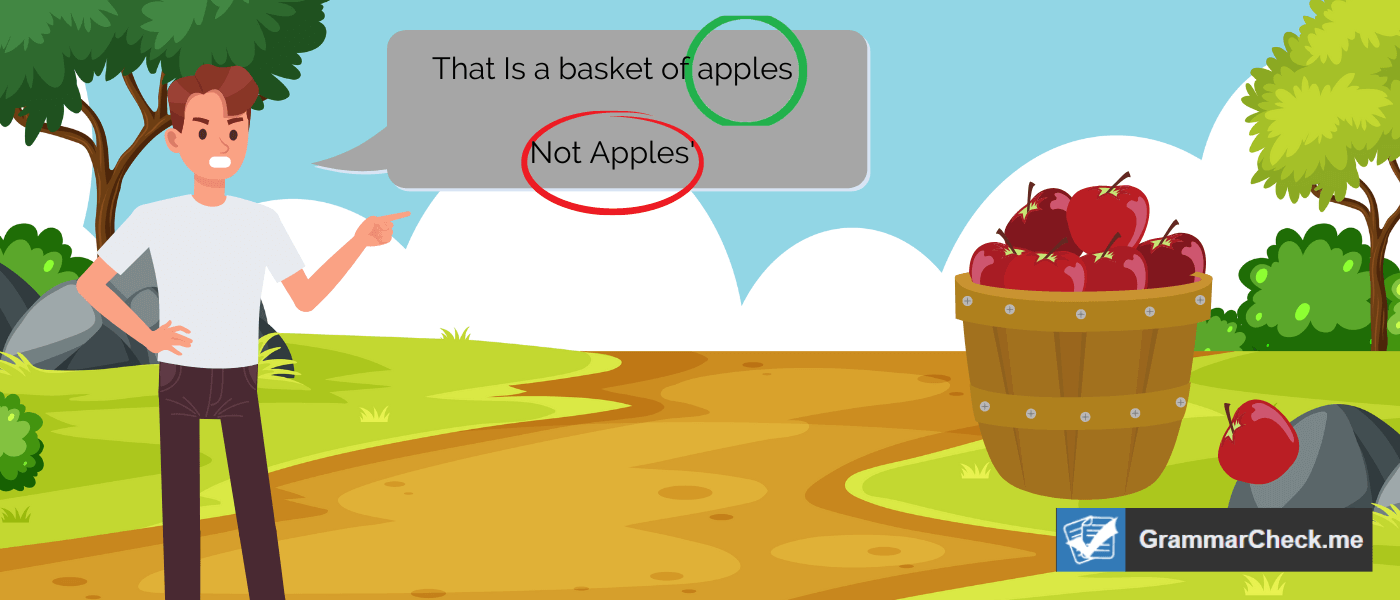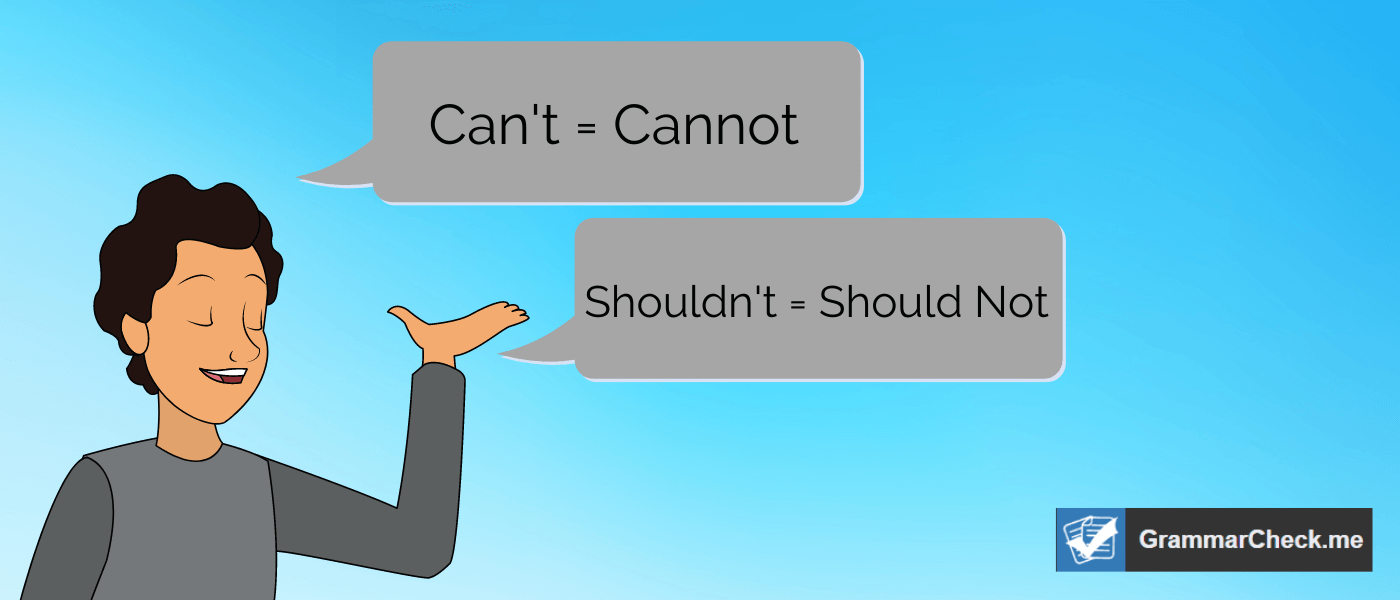Apostrophes can be confusing for writers, but they are an important part of the English language. In this article, we will help you master how to use apostrophes correctly in your writing. We’ll cover the basics of apostrophes, as well as some of the more advanced rules for using them.
Always using the right words? Make sure:
Check Your TextUsing Apostrophes Correctly
In written English, the way we generally express possession is by adding an apostrophe and an “s” to a noun. Thus, the bicycle that belongs to Rico would be “Rico’s bicycle.” If Tammy has a new boyfriend named Mitch, then Mitch would be “Tammy’s boyfriend.”
Possession is to be understood broadly, not limited to physical objects or people. For instance, “Yvette’s guilt,” “Albert’s habit of arriving late,” or “Roger Bannister’s setting of a new world record” all call for an apostrophe and an “s.” Just look at parents’ or parent’s to understand this rule further.
There are also unique rules for apostrophes that we will explore. Rules such as how to use apostrophes after -Z are not as commonly understood by new writers.

Things can get a little complicated with the possessive apostrophe, so it is worth noting some exceptions, nuances and special rules.
- Possessive personal pronouns (my, mine, your, yours, his, her, hers, their, theirs) do not take an apostrophe, even if they happen to end in “s.”
If we are writing about Betty, and we want to refer to the tennis racket she owns, we would write “her tennis racket,” or “the tennis racket of hers.” It would not be correct to write “her’s tennis racket” (or “she’s tennis racket” for that matter) or “the tennis racket of her’s.” Our post comparing the words business’ or business’s demonstrates how to use apostrophes correctly!
“Its” can be especially tricky. If you are using it to indicate possession, write it as “its.” If you are using it as a contraction of “it is” (see contractions below), write it as “it’s.”
Examples:
“The aardvark ate its own head” and “It’s surprising how often aardvarks eat their own heads.”
Possessive Form
Finally, be careful using the possessive apostrophe with nouns that already end in “s.” Such as in St. Valentine’s Day which is named after an actual person.
- If the noun is in the singular form, add an apostrophe and an “s” as always.
- If the noun is plural, add only the apostrophe to make the noun possessive.
Consider these examples:
- Jim Booth’s tuxedo.
- Jim Strauss’s tuxedo.
- The Booths’ family tree.
- The Strausses’ family tree.
- The mass’s most inspirational moment.
- The masses’ fury.
- The nanny’s experience.
- The nannies’ experience.
As a matter of convention, certain proper names that end in “s” are exceptions that take an apostrophe without another “s” to indicate possession. Most notably these include figures from the Bible and from the ancient world. So:
- Jesus’ disciples.
- Moses’ concern.
- Socrates’ idea.
- Zeus’ thunderbolts.
In fact, it has become increasingly common to drop the extra possessive “s” for all names that end in “s” rather than just these special cases, so this can be considered a gray area in language. For example, “Chris’ or Chris’s” falls under this rule.
Many people now would write “Jim Strauss’ tuxedo” instead of “Jim Strauss’s tuxedo.”
The Use of Apostrophes in Contractions
In a contraction, an apostrophe is used where a letter has been deleted, usually when two words are combined into one. Contractions are generally considered to only be appropriate in informal written English, but there are still right and wrong ways to write them. For example, “Back in the good ol days my Dad was a great athlete.”
Spelling also has a major role to play. For example, the words ran or run can completely change the meaning of a sentence just by swapping a single letter!

For example:
- “don’t” for “do not”: The space between “do” and “not” is deleted, and the “o” in “not” is replaced with an apostrophe.
- “I’m” for “I am”: The space between “I” and “am” is deleted, and the “a” in “am” is replaced with an apostrophe.
- “he’s” for “he is”: The space between “he” and “is” is deleted, and the “i” in “is” is replaced with an apostrophe.
- Some contractions are irregular. For instance:
- “won’t for “will not”: Not only is the space between “will” and “not” deleted, but the spelling of “will” is changed to “wo” (due to the difficulty of pronouncing “willn’t” as a one-syllable word). However, the apostrophe still replaces the missing “o” in “not.”
Single word contractions are most often used in poetry.
For example:
- “o’er” for “over”: The “v” is replaced with an apostrophe.
- “e’er” for “ever”: The “v” is replaced with an apostrophe.
Sometimes an apostrophe is used to replace a number, or multiple numbers, instead of a letter, most notably when referring to decades:
“Jimi Hendrix was one of the iconic figures of the ’60s.” Note that it is “’60s” and not “60’s.” You place the apostrophe where you have deleted one or more letters or numbers.
In going from “1960s” to “’60s,” you do not delete anything between the “0” and the “s,” so there is no need to place an apostrophe there. You do, however, delete the “1” and the “9,” so that is where you need to put an apostrophe.
Do Not Use Apostrophes to Pluralize a Word
Finally, an error that for some reason has become extremely common in recent years is to add an unnecessary apostrophe when pluralizing a word with an “s.” In fact, there are several rules for adding an apostrophe after -S.
Do not fall into this habit, no matter how often you see things written this way:
- “Orange’s are two for a dollar.” [Incorrect. Should be “Oranges are two for a dollar.”]
- “Mr. Maxwell took his cat’s to the vet.” [Incorrect. Should be “Mr. Maxwell took his cats to the vet.”]
- “Home’s in the neighborhood have tripled in value.” [Incorrect. Should be “Homes in the neighborhood have tripled in value.”]
To make a word plural with an apostrophe and an “s” is simply incorrect. The only possible exception is when you are pluralizing a single letter, such as “There are two m’s in ‘Sammy.’”
- You cannot create plural nouns by adding an apostrophe. You can create plural possessive nouns by adding and apostrophe at the end of the possessive noun.
But even here this usage is dying out and it is now considered preferable to put quotation marks around the single letter instead, (so “m”s, without an apostrophe).
Nouns and apostrophes
Nouns are one of the most basic parts of speech, yet they can be quite confusing.
- For plural nouns, the general rule is to add an “s” at the end. However, there are exceptions to this rule, such as “child (singular noun)” becoming “children” and “ox” becoming “oxen.”
- When it comes to possessive nouns, there are two options. For singular possessive nouns, you can add an apostrophe and an “s,” to create the possessive form. Example: “the cat’s food.”
- For plural possessive nouns, you can either add an apostrophe after the plural noun or use a possessive pronoun, such as “their.”
Apostrophe Examples
Here are several example sentences that demonstrate how to use apostrophes correctly. Remember, there are several acceptable use cases for an apostrophe so you must pay close attention to the context of a sentence!
- Show possession: “The cat’s tail” or “John’s car.”
- Contraction: “It’s” for “It is” or “don’t” for “do not.”
- Indicate possession: as in “The dogs’ leashes.”
- Indicate possession for singular nouns: “The bus’s engine” or “The bus’ engine.”
- Form plurals: “Apple’s for sale” (incorrect) instead of “Apples for sale” (correct).
FAQs – Apostrophes
An apostrophe is used to indicate possession (John’s computer) or to show that one letter has been omitted from a word (can’t). For example, the word “it’s” is short for “it is”. An apostrophe can be used to create
There are two different kinds of apostrophes: the straight apostrophe (‘), which is used to indicate a missing letter or to show possession, and the smart apostrophe (’), which is used to create contractions or to show plurals.
There are technically two different ways to form contractions: with an apostrophe before the last letter of the word or with an apostrophe after the last letter of the word.
A contraction possessive is a word that takes the place of two other words. For example, “it’s” is the contraction for “it is”. Another example is “you’re” which is the contraction for “you are”. Contraction possessives are commonly used in writing to save space and make writing shorter and easier to read. These contractions use an apostrophe to combine words.
In most contractions, an apostrophe represents the missing letters. For example, “don’t” is short for “do not”, and “won’t” is short for “will not”. Adding just an apostrophe can create a contraction.
The Bottom Line
The apostrophe has many functions in the English language, from indicating possession to creating contractions. By understanding when and how to use this punctuation mark, you can take your writing skills up a notch. Follow our tips to use this punctuation correctly and make your writing clearer and more accurate. Who knew only an apostrophe could be so useful.
